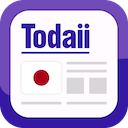Is Mastering Basic Japanese greetings really this easy?
Learn Japanese - Master Basic Greetings in Japanese Fast!
1477 viewIs Mastering Basic Japanese greetings really this easy?
Yep, you will learn a few tips to master basic Japanese greetings fast with this introduction lesson.
In this lesson, you are going to learn how to say hi, how are you in Japanese and how to answer.
It’s super easy and it only takes 3 minutes. Let’s learn a short dialogue.
So here is the typical conversation you hear every day in Japan.
こんにちは。 - "Hi" げんきですか。 - "How are you?" げんきです。 - "I am fine."
こんにちは。 - "Hi" or "hello". こ、ん、に、ち、は。
こんにちは. こんにちは is a general greeting meaning "hi" or "hello".
It also means "good afternoon" as one of the greetings for the day
But you can say こんにちは。All day long as a greeting when you meet people.
Next we have げんきですか。 - "How are you?". Let’s take a closer look.
げんきですか。 - "How are you?". げ、ん、き、で、す、か。
げんきですか。 げんき means "healthy", です is basically same meaning as "to be" in English, か is a sentence ending particle that can be used to make a question.
げんきですか。 literally means "are you healthy?" but it is used to mean "how are you?."
Now the easy part, answering the question. To answer the question げんきですか。 - "how are you?"
you just say げんきです。 - "I am fine."
You just have to drop the か(ka) at the end. げんきです。 - "I am fine."
げ、ん、き、で、す。 げんきです。
Let’s take a look at these two lines. Person A: げんきですか。 - "how are you?" Person B: げんきです。- "I am fine."
The only difference is, you drop the か when answering the question.
See this conversation. We are going to shorten it down. Ta-dah!
Here we have the same conversation げんき? - "How are you?" げんき。 - "I am fine."
The only difference is the intonation げんき? げんき。 - "I am fine."
Now be careful. This is a very informal conversation.
Don’t use it with your teachers or in business situations.
Now before you go, let’s look at two other responses to "how are you".
First we have.. まあまあ。 - "so so". さいあく。 - "Bad" or "I am not doing good at all".
So now let’s practice. So, I will ask you how you are and you respond.
こんにちは、げんきですか。
げんきです。 Good job! Now, you ask me how are you.
げんきです。 まあまあです。 さいあくです。 げんきですかー!
げんきがあれば、なんでもできる。 げんきですかー!
No word list

日本のこどもの数は去年から33万人減 43年連続減少 総務省発表(2024年5月4日)

24時間オペレーターが対応 ロボット通して人と会話(2023年3月27日)

食べてよし!見てよし!「ホタルイカ祭り」に多くの家族連れ 富山・滑川市(2024年4月28日)

ウクライナから避難した女性 福島県で受け入れ(2022年4月7日)

“電車内で刺傷事件”想定・・・JR東と警察が大規模訓練(2021年11月16日)

能登半島地震の被災地支援に向け 1389億円支出を閣議決定(2024年4月23日)

LINEスタンプを小中学生から公募 投票箱を設置

トヨタ、9月の世界生産4割減 コロナ拡大などで(2021年8月19日)

豚の生姜焼きと、難しいあれこれ。

無人配達ロボット出動!人手不足対策の切り札に・・・(20/03/03)


You need to upgrade to a premium account to using this feature
Are you sure you want to test again?

Please upgrade your account to read unlimited newspapers


Todaii Japanese is a website for learning and reading Japanese news integrating various features such as dictionary, practice, testing, ...
https://todaiinews.com
todai.easylife@gmail.com
(+84) 865 924 966
315 Truong Chinh, Khuong Mai, Thanh Xuan, Hanoi


